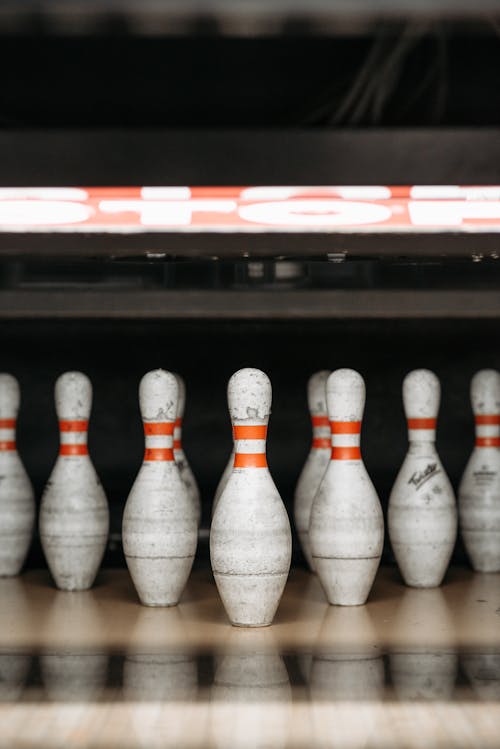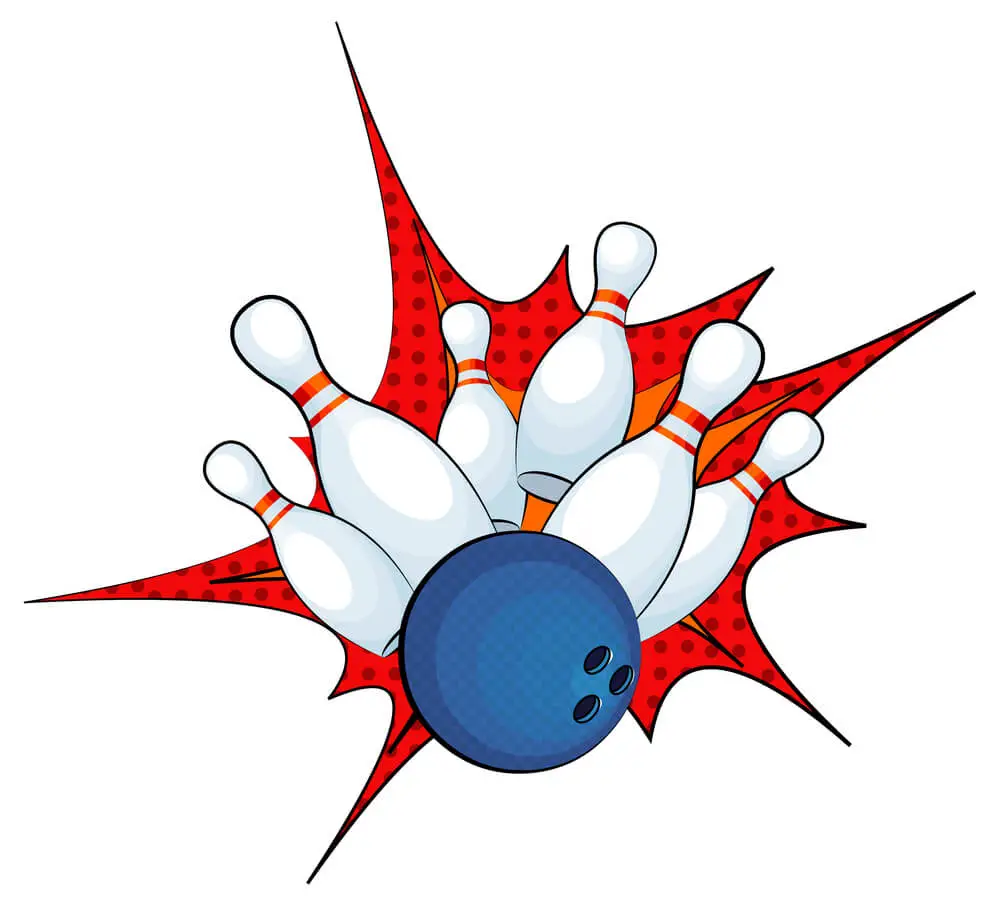It takes a significant degree of technical expertise and skill to become good at bowling. As a result, understanding the basics of bowling is essential. Many people are unaware of several regulations in this game, so don’t be fooled!
A bucket is a significant bowling phrase you should be aware of. So, what is the definition of a bucket in bowling, and how do you score on one? That’s precisely what I’m here to tell you, so you don’t have to worry about it.
What is a bucket in bowling, and how do you achieve the best score? This subject will be addressed in this article. So, if you like learning about the fascinating bowling game, keep reading.
Pin Arrangement
To truly grasp the notion of a “bucket,” one must be well-versed with the pin deck layout at the other end of the bowling alley. A typical game of bowling features ten 15-inch pins.
The pins are numbered from left to right and back to front in an equilateral triangle. If you want to score, you’ll need to knock down as many pins as possible in a single shot.
In a ten-frame game, you’ll be able to collect as many points as possible in your two shots each. The winner of the game will be the player with the most points at the end.
Bucket In Bowling
The spare arrangement in bowling, known as “the bucket,” comprises an assortment of standing pins arranged in a diamond pattern. They’re also known as “dinner buckets” by some professional bowlers.
Three-pin clusters are also known as buckets in some parts of the world. Let’s look at some of the most frequent bucket types that gamers encounter.
2, 4, 5, 8 Bucket
Because of the two, four, five, and eight pins remaining to stand, this bucket is known as the 2, 4, 5, 8 buckets. It happens a lot more regularly than other events.
3, 5, 6, 9 Bucket
The three-digit numbers 3, 5, 6, and 9 and the number 3 are in the three-figure groupings of four standing pins known as the 3, 5, 6, and 9 buckets.
1, 2, 3, 5 Bucket
The 1, 2, 3, 5 bucket, which has the 1, 2, and 3 pins standing on its side, is the most uncommon and least popular in professional bowling. Because most bowlers try to hit the pocket with the leading pin (which is difficult to see), it’s common for this bucket to be missed.
2, 4, 5 and 3, 5, 6 Bucket
Clusters of 2, 4, and 5 pins are sometimes known as buckets depending on where you are.
Lefties Buckets
The 3, 5, 6, and 9 pails are tough to climb. It would help if you struck every pin in the pattern with your ball, and it must not deflect after hitting any one of them.
This bucket, which is popular among left-handed bowlers since they tend to hook and curve towards the bowling balls, is regarded as the greatest for lefties. If a player knocks over the diamond cluster, they get a spare.
Righties Bucket
The most hard-to-find spares are Buckets 2, 4, 5, 8, and 9. The bowling ball frequently deflects the number 8 pin, preventing a spare.
Bowlers who bowl with their right hand can hook or curve their ball to the left side of the lanes and obtain a spare.
How to Score a Bucket?

Having learned about buckets, the next step should be learning how to score a bucket. Different-handed players face different buckets, so the technique varies.
Take a look at how you can accurately score a bucket. When attempting to score a basket, the most important thing to remember is that you must hit the leading pin. This will help you deflect the other pins by deflecting them away.
If you’re dealing with a 3, 5, 6, 9 bucket, which is more accessible than the 2, 4, 5, 8 buckets (and comes before the 2 in terms of difficulty), you should go for a hook.
For the same reason that you must look for a pocket in a 10-pin arrangement, you must look for a pocket in a bucket.
You can also go with a straightforward uniform toss, ideal for clusters of 1, 2, 3, and 5 since the entire cluster is in the middle. However, if you’re willing to take the chance, ensure you know how to throw a straight ball properly.
When confronted with the more complex 2, 4, 5, or 8 clusters, all you’ll want to do is use the hook. To obtain the additional ball, make use of the hook.
When searching for a bucket spare, you should also look for pin deflection. Pin collision can be induced by pin action, in which the pins clang together when the bowling ball strikes them.
Bowling Terms
It is important to talk like a pro when bowling well. You should be able to speak with your fellow bowlers and friends in basic bowling terms, at the very least! To assist you in learning the jargon, here are some standard terms found in bowling:
- A stroke occurs when you knock down all of the pins with a single swing.
- A spare is a bowler’s second attempt to knock down all remaining pins.
- You’ve scored a double as soon as you strike out twice.
- A turkey is given three strikes in a row.
- Now that you’ve made a turkey, it’s time to move on to the badger. A “four-badger” is four consecutive strikes; a “five-badder” is five consecutive strikes; and so forth.
- A perfect game is when a person hits 12 consecutive balls in a row, resulting in 300 points.
Conclusion

The bucket is the toughest spare to get, and only the most experienced players can do it. However, seeing as you’ve looked at this information, I’m sure you’ll be able to finish the task.
As a result of reading this article, you should now have a better understanding of bowling. Your bowling skills will surely improve as a result of reading this article.
Related Articles:





